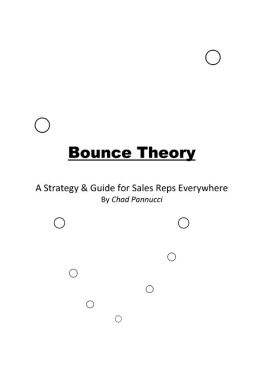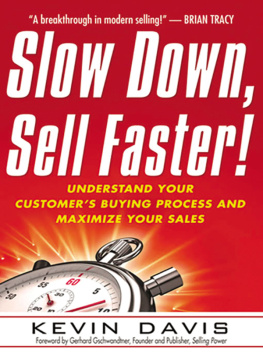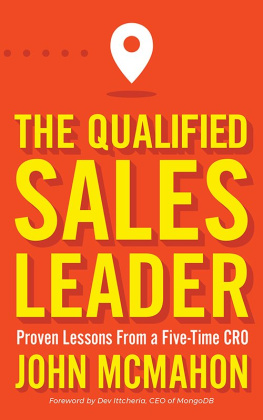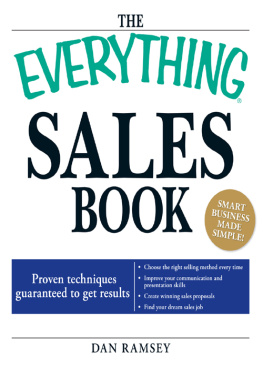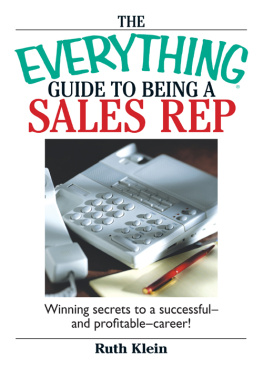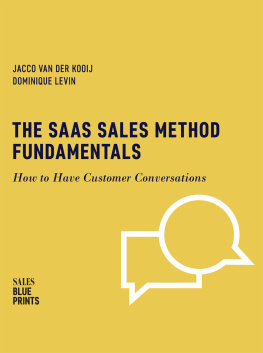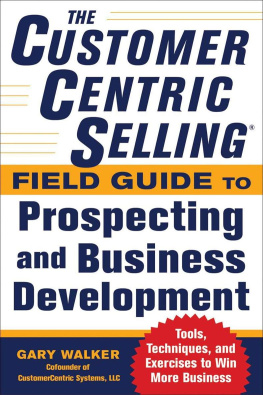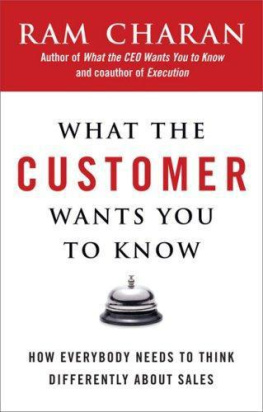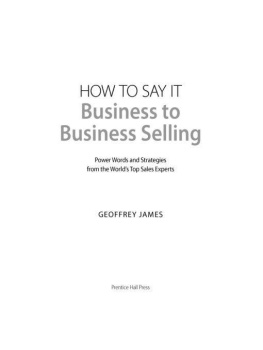ISBN: 9781623096700
Contents
The Bounce Loop
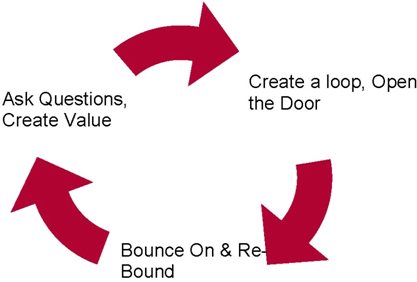
Introduction
Bounce Theory is a creative sales strategy of conducting your daily activities. Bounce Theory fosters increased activity, a shortened sales cycle and builds better relationships in less time with fewer resources. This strategy can be utilized in any industry for anyone willing to apply its principles. Bounce Theory is focused on immediate results and builds a foundation for future growth. Most importantly, it is a continuous cycle that you can use to perpetually build your sales business. As sales professionals, regardless of the industry, we face endless obstacles while trying to navigate the sales process. Gatekeepers are any individuals who pose as an obstacle or deterrent to accessing decision makers. They are positioned everywhere, often in strategic locations, to sidetrack our progress and minimize our face time and access to decision makers. Bounce Theory is about creativity utilizing a measured, time-tested process to generate activity and overcome challenges. Bounce Theory allows us to turn brief meetings with our decision makers into high impact interactions. Information gained and tasks assigned during these interactions can be leveraged to avoid future roadblocks from gatekeepers. Bounce Theory will help you shorten the sales cycle and win more business now, while creating additional opportunities for later. As sales professionals, we cannot afford to waste face time with our customers. Every interaction should be high impact and generate the possibility for more sales. This is possible through utilization of a consistent strategy that is impactful and, most importantly, that will work. We can do this through leveraging Bounce Theory. We must be better prepared than our competitors to take advantage of situations to capitalize on opportunities and win new business. Lets examine the steps in the Bounce process so you can better understand how to utilize this strategy to increase your activity and shorten your sales cycle.
How You Bounce:
1. Ask Questions
Asking the right questions is critical to the Bounce process. Asking leading questions will allow you to proactively influence the direction of the conversation. Influencing the direction of a dialogue will allow you to have a better opportunity to control the conversations end point. The ultimate goal of asking questions is to engage dialogue, uncover opportunities and gain information so you can formulate a comprehensive strategy with a focus on customizing a solution that will address your customers needs and help them to solve problems. Consider a sales representative in the medical device field. Sales representative Joe has an appointment with Dr. Smith at the physicians office. Prior to asking questions, Joe needs to have a specific goal in mind. Lets assume Joe wants to obtain access into the physicians surgery center, which currently uses products from a competitor. With this specific goal in mind, Joe sets up his initial Bounce strategy by asking a leading, open-ended question. He focuses on a current deficiency and asks, What challenges are you having with the medical devices at your surgery center? There are probably only a couple of answers that Dr. Smith would give in this case. Possible answers could be 1) cost or 2) a specific feature of the item. As long as any opportunity for improvement is identified, Joe can move forward with his Bounce strategy. No business is perfect, and opportunities for improvement can always be found. Asking leading questions will lead you to opportunities. Thats what asking leading questions is all about!
2. Create Value
You create value by working for your customer, at no additional expense or effort to them. Regardless of the industry, your customers and accounts face similar challenges with respect to which products they purchase. All businesses are interested in reducing cost, streamlining operations and accessing new technologies. However, businesses often lack the time or manpower necessary to find solutions to these issues. What separates good sales representatives from great sales representatives is the ability to think big picture with a vision to see and strategize the entire sales cycle from the outset. The great sales reps are solution driven, creative and charismatic idea people who are looking to help solve a customers problems. Tremendous and long term sales growth is often the byproduct of a solution driven approach to solving problems. After asking questions, you need to create value by offering to help solve any problems your customer may have. There are often numerous opportunities to help your customer solve problems, such as, assistance in reducing costs or helping to streamline operations etc. You could offer to bring in your products for a head-to-head comparison with the competitors. Perhaps you could examine their current utilization and offer to complete a price comparison to save them money. Maybe your company can offer a wider range of products that can help your customer consolidate and streamline inventory.
Regardless of the service offered, it should be performed at no additional effort or expense to the customer. If you can eliminate every potential reason the customer would have to say no to buying your products, then the possibility for yes will be dramatically increased. For example, Sales Rep Joe could say, Dr. Smith, my company manufactures the best medical devices and technology currently on the market, and our pricing is more competitive that what you are currently using. How about I go to your surgery center this week to inventory your current product and look at your utilization? I can show you a cost comparison of exactly how I can save you money in addition to being able to give you access to the best medical technology currently on the market. Through asking questions you can, and will, uncover opportunities to create value. You are making a value proposition to your customer. At no additional cost or effort to them, you will provide a way to minimize costs, improve logistics, and to help to streamline their operations. In addition, and probably most importantly, you have gained access! Through the creating value technique, you have transcended the role of sales representative and graduated into the realm of an ally, an asset, and a true sales professional. By doing this, you will be consistently successful. Now thats compelling! Through this example, Joe has started to create a path for himself that will expedite and shorten the sales process.
3. Create a Loop
This is Bounce Theorys cornerstone concept. Creating a loop with the customer secures a reason for a follow up face to face meeting in addition to helping give you access to the customer for scheduling a follow up meeting. Continuing with the previous scenario, after creating value, Joe will want to create a loop. Joe will promise to complete his task (ex., a cost comparison or inventory-taking) and subsequently circle back to share that information with Dr. Smith as soon as his schedule allows, but certainly no longer than a few days. Sharing the cost comparison or inventory with his customer puts Joe on the same side or the same team as his customer. Joe is now a resource and an ally who is working to help solve problems and create solutions within the customers organization. Leveraging this loop will help Joe bypass the gatekeepers and consistently stay in front of the decision makers who buy his products. Creating a loop secures your access to your customers thereby shortening the sales cycle, preventing lost opportunities and allowing you to capitalize on all of your interactions.
4. Open the Door
Next page
